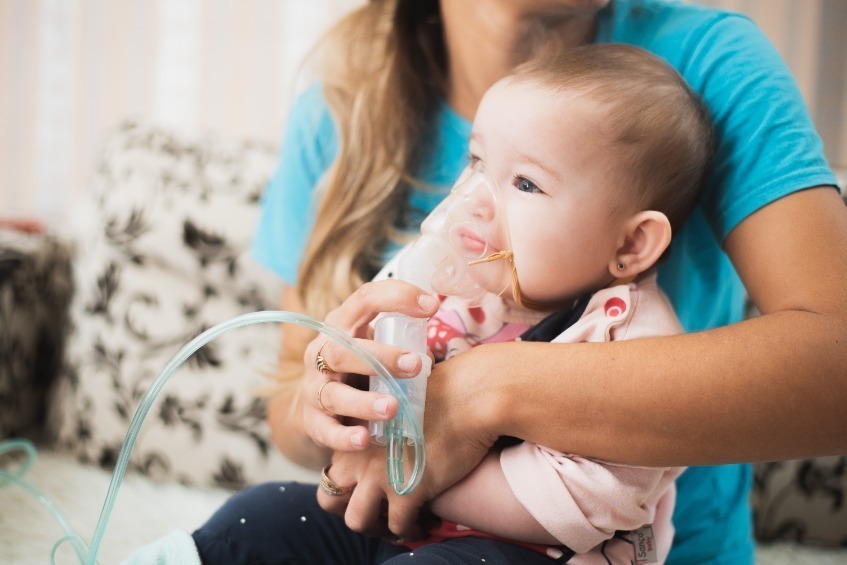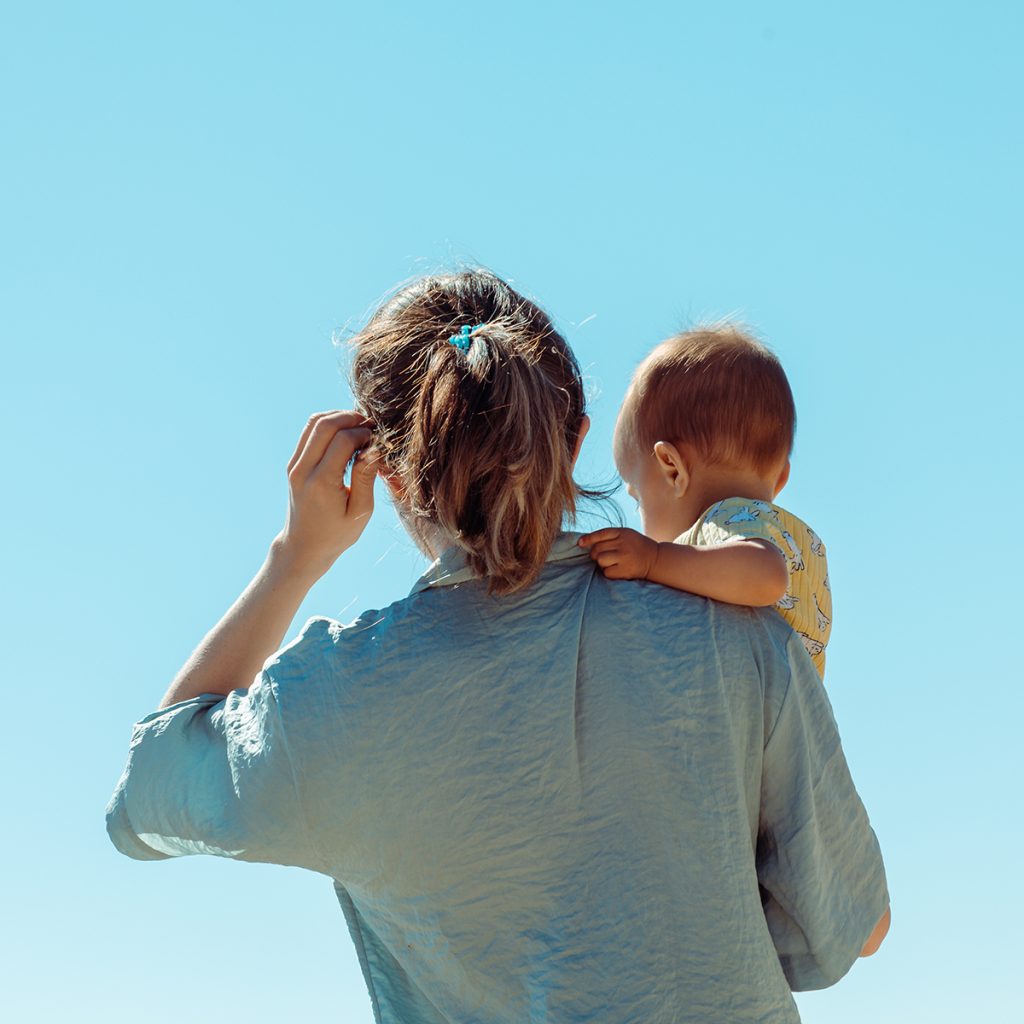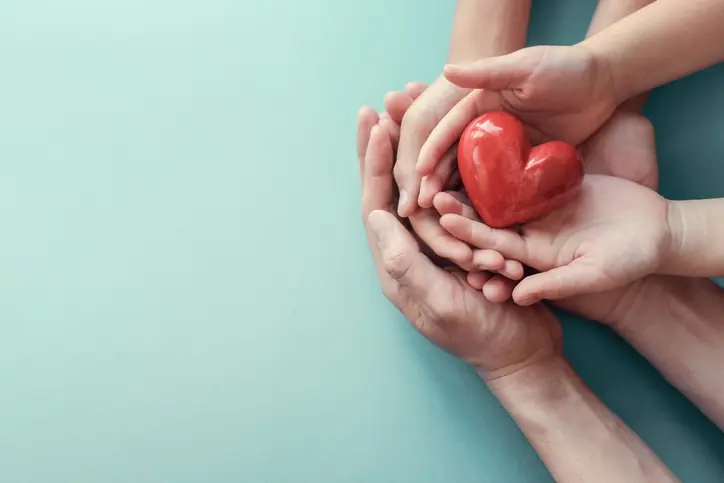
As the weather gets colder, you may be anticipating familiar seasonal illnesses that come with winter like cold and flu. However, with viruses like RSV and COVID-19 being prominent this year, more guidance might be needed on how to keep children healthy during the winter months.
By now, everyone is familiar with viruses like the cold, flu, and COVID-19 — but you may not be as familiar with another common virus that’s been in the news recently: RSV.
With expert guidance provided by Melissa St. Germain, M.D., Vice President and Medical Director of Children’s Physicians and Urgent Care and a pediatrician at Children’s Physicians, West Village Pointe, here’s what you need to know about RSV this season.
In October 2022, there were 852 reported positive tests for RSV in Douglas County — and 65% of those cases were children younger than 5 years old. Forty percent of the positive cases were from children under 2 years old.
What is RSV?
Each year, the colder weather brings an increase in illnesses, but this year, they seem to be arriving earlier. With more children catching viruses earlier in the year, prevention is essential for everyone’s health.
RSV — also known as the respiratory syncytial virus — is a relatively common respiratory virus affecting the upper and lower respiratory tract. Its symptoms aren’t typically that severe and resemble the symptoms of a cold.
Which children are at a higher risk for severe RSV?
RSV causes an estimated 58,000 hospitalizations and 2.1 million non-hospitalization (outpatient) visits in children under 5 years old annually. The younger a child is, the higher their risk of severe illness from RSV.
Dr. St. Germain wants parents to know babies have smaller lungs that are still developing and have less capacity for reserve when the virus causes inflammation in lung tissue.
Additionally, babies with other health conditions such as prematurity, chronic lung disease, congenital heart disease or immune system issues are at high risk. Babies with low birth weight and those exposed to secondhand smoke also are at risk.
While most RSV cases aren’t dangerous and most people can recover in 1 to 2 weeks, RSV can be very serious for babies, very young children and elderly adults.
What are the symptoms of RSV?
A key part of keeping your children, family, and community safe is knowing which virus symptoms to look out for during the winter months.
Symptoms of RSV include:
- High or low fever or chills
- Runny nose
- Decrease in appetite
- Coughing
- Sneezing
- Wheezing
With infants younger than 6 months, they may not show signs of RSV, and their early symptoms might look a little different than those of older children.
If you have a child under 6 months old, look out for symptoms of RSV like:
- Low appetite
- Low activity levels
- Irritability or fussiness
- Stops and starts in their breathing (apnea)
RSV symptoms can be the same as the symptoms of other viruses — and your child can have more than one sickness at once. Most cases of RSV are mild, but with high case numbers in our communities, it’s important for families to understand the virus and its risks – especially for small children.
How do I know when my child’s illness means a trip to the emergency room?
Typically, RSV symptoms are cold-like, and they tend to clear up on their own in a couple of days. Most children can recover safely and at home. However, there are times when RSV can cause severe or serious health problems that require medical attention.
Dr. St. Germain shares that it’s important to watch for how hard a child is working to breathe. Here are some more serious symptoms to be on the lookout for:
- Dehydration: In infants, this can look like less than 1 wet diaper in an 8-hour period.
- Difficulty breathing: This might look like fast, short breaths, a “caving-in” in the chest or flaring nostrils — and may also be accompanied by grunting noises.
- Change in skin: Your child’s skin, lips, or tongue might look blue, gray, or purple.
- Symptom length: Symptoms that last for more than 1 week without improvement (can be a sign of another issue like an ear infection).
Call your child’s provider or seek medical attention right away if your child has any of these symptoms. Children’s offers both urgent and emergency medical care for patients.
How do doctors test for RSV?
Many of the symptoms of winter illnesses like RSV, the flu, cold or COVID-19 overlap, and it can be confusing — as well as nerve-wracking — to try to figure out what your child might have. Look out for some of these symptoms of RSV, but when in doubt, don’t try to self-diagnose.
The best thing you can do when your child experiences symptoms of illness is to call their pediatrician. RSV, flu, colds, and COVID-19 can all be diagnosed through a test called the respiratory pathogens panel.
The respiratory pathogens panel tests for all four of these illnesses — as well as adenovirus infections, whooping cough, and bacterial pneumonia — at the same time. All it takes is a single swab from your child’s nose, meaning your child won’t have to take multiple tests.
How can I treat my child’s RSV symptoms?
Even with the best prevention, it’s still possible for children to get sick — that’s just part of being a kid. In winter especially, it’s not always easy to keep certain illnesses away.
If your child has tested positive for RSV, they can often recover at home. There is no specific treatment or vaccine for RSV yet — though developments are always occurring and new options may be available in the next few years.
You can treat your child’s symptoms with:
- Consistent drinking and eating to avoid dehydration
- Pedialyte and a water bottle can help them stay hydrated
- Ibuprofen or acetaminophen for fever (do not give to children under 6 months old without their pediatrician’s approval)
- Nasal saline or humidifier for stuffy nose and mucus
With infants under 6 months old, you may be wondering how to best help them recover from RSV.
To help care for your infant’s RSV symptoms at home, you can:
- Offer a bottle or nursing more often to keep them from becoming dehydrated.
- Let them sleep — but be sure to keep track of how much they are sleeping.
- Use a bulb syringe for stuffy nose and mucus (good for infants who can’t clear their own nose).
- Talk to your child’s pediatrician about how to manage fussiness or irritability.
If your child needs attention for a severe case of RSV, they may be admitted to the hospital. Hospitalization can be scary, but 97% of cases can be treated at home, and most hospitalization visits for RSV aren’t very long (just a couple of days). While in the hospital, your child might be treated with an IV to help them eat and drink or with additional oxygen, intubation, or ventilation to help them breathe.
Schedule your child’s flu shot or COVID-19 vaccination through Children’s Connect or by calling your trusted health care provider’s office.
Why is RSV a bigger problem this year than usual?
Some viruses tend to show up at the same time every year. As a result, there is often less overlap between the peaks of different viruses — so the peak flu season is different from the peak RSV season. This year some viruses are coming earlier than they usually do.
Dr. St. Germain also points to the effects of prevention strategies in response to the COVID-19 pandemic as a factor in the timing of this year’s surge. Many young children did not attend daycare in the last two years, and their older siblings and family members wore masks more frequently. With common day-to-day routines and socializing resuming, viruses that did not spread as freely are now circulating more easily in the community.
How can I lower my child’s risk of getting RSV?
RSV is very contagious, and it spreads quickly in places like child care centers and classrooms, generally by direct contact and respiratory secretions (snot) around 4 to 6 days after exposure. While your child’s classroom can be the starting point for new knowledge and friends, it can also be the place where viruses spread.
Help your child stay safe at school or daycare by:
- Practicing good hand-washing habits
- Sending your child to school with a small pack of disinfectant wipes or gifting some to your child’s classroom to disinfect surfaces
- Changing and washing your child’s clothes after going to school or daycare
- Encouraging children to cough and sneeze into their elbow
- Wearing a mask during times of high illness
Another way to help keep your community safe is to keep your child home from school or daycare if they are feeling sick.
As different seasonal viruses are picking up, small steps like these can have a big impact on your whole family’s health and safety.
Reach out to your child’s primary care provider for guidance if you think that your child may have RSV, or visit ChildrensOmaha.org/ChildrensPhysicians to find a physician.


